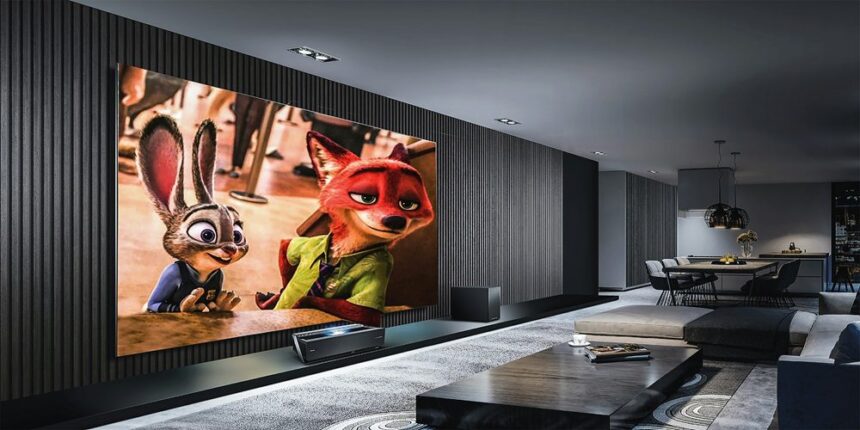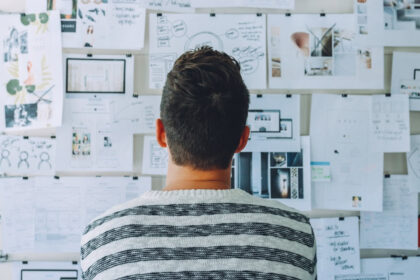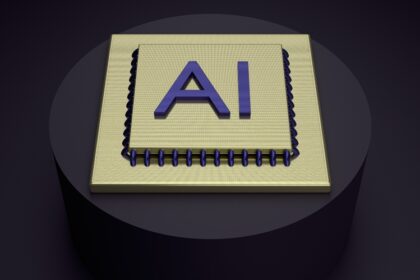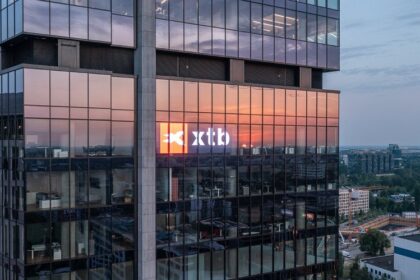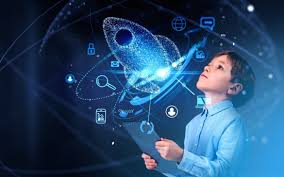Are you ready to bring your 3D animation characters to life in a way that captivates audiences and leaves them in awe? In this blog post, we will dive deep into the world of realistic character creation, sharing expert tips and techniques to help you master this art form. From lifelike movements to intricate facial expressions, get ready to unleash your creativity and create truly unforgettable animations. Let’s take your skills to the next level and elevate your work with stunningly realistic 3D characters!
Introduction to 3D Animation Characters
In the world of computer graphics and animation, creating lifelike characters is a crucial aspect. These characters serve as the main protagonists or supporting cast in animated movies, video games, and even advertisements. With advancements in technology, 3D animation has become increasingly popular for its ability to generate highly realistic and emotive characters.
So, what exactly are 3D animation characters? In simple terms, they are digital models built using software that mimics real-life objects or people in a three-dimensional space. These characters can be manipulated and moved on screen to tell stories and create immersive experiences for viewers.
Understanding the Fundamentals of Character Design and Development
Character design and development is a crucial aspect of creating realistic D animation characters. It involves more than just drawing or modeling a character – it requires careful consideration of various elements such as personality, motivation, physical attributes, and even backstory. In this section, we will delve deeper into the fundamentals of character design and development to help you master the art of creating truly lifelike animated characters.
1.1 Know Your Medium
Before diving into the specifics of character design and development, it is important to understand the medium in which your characters will be portrayed – D animation. This form of animation thrives on creating believable and relatable characters that can exist in three-dimensional space. Unlike 2D animation, where movement is limited to two dimensions, D animation allows for a greater range of motion and depth. Therefore, when designing characters for D animation, it is essential to keep their physical proportions and movements in mind.
1.2 Establishing Personality Traits
A crucial step in designing any character is establishing their unique personality traits. A well-developed personality will bring your character to life and make them feel authentic to your audience. Start by giving your character specific traits that define who they are – are they outgoing or introverted? Hot-tempered or calm? These traits will affect how they interact with others as well as how they move and behave.
1.3 Visual Design Elements
Character design also involves incorporating visual elements that represent their personality traits. For example, if your character is timid or shy by nature, you may choose softer angles or rounded shapes in their facial features and body structure.
Additionally, consider using colors strategically to convey certain characteristics – brighter colors denote energy while muted tones might indicate a more reserved personality.
1.4 Create a Backstory
Every person has a story that has shaped who they are today; the same goes for fictional characters! Creating a detailed backstory for your animated character can add depth and dimension to their personality. It also helps you understand their motivations and informs their actions in the storyline.
1.5 The Importance of Context
Context is crucial in character design and development. Understanding the world your characters inhabit and how they fit into it will help create a more cohesive and believable narrative. Consider factors such as time period, culture, societal norms, etc., when designing your animated characters.
Tips and Techniques for crafting Realistic 3D Characters
Creating realistic 3D characters is a complex process that requires attention to detail and a combination of technical skills and creativity. It takes time, effort, and practice to master the art of crafting realistic 3D characters. In this section, we will explore some tips and techniques that can help you in creating believable and lifelike 3D characters.
1. Study Human Anatomy:
The first step towards creating realistic 3D characters is to have a good understanding of human anatomy. This includes studying the proportions, muscle structure, bone structure, and how all these elements work together to create natural movement in the human body. Having this knowledge will help you in creating accurate 3D models that look more lifelike.
2. Use References:
References are crucial when it comes to creating realistic 3D characters. They can be photographs, videos or even real-life objects that resemble the character you are trying to create. References will help you understand details such as skin texture, wrinkles, hair patterns, etc., which are essential for achieving realism in your character.
3. Pay Attention to Detail:
The smallest details can make a significant difference in the overall appearance of your 3D character. It is important to pay attention to every aspect of your character’s features such as facial expressions, clothing folds, scars or birthmarks if any., These details contribute significantly towards making your character look more human-like.
4. Use High-Quality Textures:
To enhance the realism of your 3D characters’ appearance, it is crucial to use high-quality textures for their skin, hair or clothing material. Textures add depth and richness to your character’s appearance making them more believable.
5.Use Rigging Techniques:
Rigging is an essential part of 3D animation as it gives life to your character’s movements by providing them with bones and joints just like real humans have. Using advanced rigging techniques like inverse kinematics (IK) and forward kinematics (FK), you can achieve more natural and smooth movements in your character.
6. Master Facial Animation:
Facial expressions play a significant role in conveying emotions and bringing life to your 3D characters. It is essential to master facial animation techniques such as lip-syncing, blinking, eye movement, and subtle muscle movements to create realistic and believable expressions.
7. Use Advanced Lighting Techniques:
Lighting is another crucial aspect of creating realism in 3D characters. With the use of advanced lighting techniques like ambient occlusion, global illumination, or bounce light, you can add depth and shadows to your character’s features making them look more lifelike.
Utilizing Advanced Tools and Software for Creating Lifelike Animations
In today’s digital age, animation has become an increasingly popular medium for storytelling and entertainment. With advancements in technology, animators now have access to a wide range of advanced tools and software that allow them to create lifelike and realistic 3D animations. These tools not only save time and effort, but also provide artists with limitless possibilities for bringing their imagination to life.
One of the key elements for creating realistic 3D characters is the use of motion capture technology. This technique involves recording the movements of real-life actors or objects using specialized cameras or sensors. The captured data is then imported into 3D software where it can be used to accurately recreate natural movements in animated characters. This allows animators to achieve a level of realism that would be almost impossible through traditional frame-by-frame animation techniques.
Another crucial tool for creating lifelike animations is physically-based rendering (PBR) software. PBR uses complex algorithms to simulate how light interacts with different surfaces, resulting in highly realistic textures and materials within the 3D environment. This technique is especially useful when it comes to recreating human skin, hair, and clothing as it allows for subtle details such as wrinkles, pores, and hair strands. PBR also helps maintain consistency between scenes by ensuring that lighting behaves realistically across all objects in a scene.
Apart from these specialized tools, there are several advanced animation softwares available in the market that aid in creating realistic character movements and expressions. One such software is Autodesk Maya which has features like dynamic simulations and muscle systems that allow animators to add fluidity and weight to character movement.
For facial animation specifically, Faceware Technologies offers a suite of advanced facial motion capture solutions that utilize both hardware devices and software programs. These solutions enable animators to translate subtle facial expressions from an actor onto their digital character model with unprecedented accuracy.
Exploring Different Types of 3D Animation Characters (Humans, Animals, Fantasy)
There are countless possibilities when it comes to creating 3D animation characters, and one of the most exciting aspects is exploring different types of characters. In this section, we will delve into the world of 3D animation characters and discuss some of the most common types: humans, animals, and fantasy creatures.
Humans are often the first type of character that comes to mind in 3D animation. Representing real-life people in a computer-generated form can be both challenging and rewarding. To create realistic human characters, it’s essential to have a strong understanding of anatomy, movement, and facial expressions. Details such as muscle definition, skin texture, hair strands, and eye movements all contribute to making a humanoid character appear more lifelike.
When it comes to animals in 3D animation, there is no shortage of options. From domestic pets like cats or dogs to exotic creatures from mythical worlds – animating animals requires a different approach than humans. The key to creating believable animal characters lies in mastering their distinct movements and behaviors. For example, felines move differently than canines due to their anatomy and instincts. Capturing these nuances is crucial for bringing animal characters to life on screen.
Another exciting type of 3D animation character is fantasy creatures – from dragons and unicorns to aliens and monsters. These characters offer endless creative opportunities as they do not adhere to any realistic constraints like humans or animals do. However, bringing fantasy creatures to life still requires extensive research and imagination combined with technical skills such as texturing and rigging techniques.
One crucial aspect when creating any type of 3D animation character is attention to detail. Small details such as wrinkles in clothing or subtle facial expressions can make a significant impact on the believability of a character on screen.
Furthermore, each type of character may require specific software tools or techniques for optimal results. For instance, sculpting tools may be useful for shaping organic forms such as humans and animals, while rigging techniques may be necessary for creatures with unique anatomy.
Case Studies: Examining Successful Examples of Realistic 3D Characters
Case studies are a great way to learn and gain insights into successful examples of realistic 3D characters. By examining these case studies, we can understand the techniques used by professionals in creating realistic 3D characters and apply them to our own projects.
One such case study is Pixar’s beloved character, Woody from “Toy Story”. The team at Pixar paid attention to every detail in order to bring Woody to life on the screen. From his signature cowboy hat down to the stitching on his clothes, no aspect was left untouched. The use of advanced modeling techniques and intricate texturing gave Woody a lifelike appearance, making him relatable and endearing to audiences of all ages.
Another famous example is Gollum from “The Lord of the Rings” franchise. Created by Weta Digital, Gollum was brought to life using motion capture technology combined with computer-generated imagery (CGI). The team studied human body movements and facial expressions extensively before translating them onto the CGI model of Gollum. This resulted in a character that felt real and had emotions that were relatable to viewers.
Moving on to video game characters, one prime example is Lara Croft from “Tomb Raider”. With advancements in technology, her appearance has evolved drastically over the years. However, what makes her stand out as a realistic 3D character is her motion capture animation paired with complex facial rigging. These techniques allow for fluid movements and detailed facial expressions that make players feel like they are controlling an actual person rather than just playing a video game.
But it’s not just big budget films or games that have mastered the art of creating realistic 3D characters. Independent animated short films like “Pip” by Bruno Simões also showcase stunningly lifelike characters created using primarily Maya software and carefully hand-painted textures.
Common Mistakes to Avoid When Creating 3D Animation Characters
When it comes to creating 3D animation characters, there are many factors that contribute to making them look realistic and believable. From the design and movement of the character to the texturing and lighting, every detail plays a crucial role in bringing the character to life.
However, even with advanced technology and tools available, there are still common mistakes that can affect the overall quality of your 3D animation characters. In this section, we will discuss some of these mistakes and provide tips on how to avoid them, so you can take your character creation skills to the next level.
1. Neglecting Proper Reference and Research:
One of the biggest mistakes animators make is skipping proper reference and research when creating 3D animation characters. It is essential to study real-life anatomy, facial expressions, movements, and other physical characteristics before designing your character. This will ensure that your character’s proportions and movements are realistic and lifelike.
2. Poorly Designed or Overly Complex Models:
Another mistake that can significantly impact your 3D animation character is a poorly designed or overly complex model. It’s crucial to find a balance between eye-catching designs and functional models that are easy for animators to work with. An overly complex model may cause technical difficulties during rigging, while a poorly designed one may lack detail or be unappealing visually.
3. Ignoring Weight Distribution:
Weight distribution plays an essential role in creating realistic movements for 3D animation characters. Many beginners tend to overlook this factor when posing their characters or animating them. As a result, their movements seem unnatural or floaty instead of having weight behind them.
4. Lack of Attention to Detail:
Details such as wrinkles on clothing or facial expressions give life-like qualities to 3D animation characters. Careful attention must be paid when adding these details as they help portray emotions realistically.
5 . Not Utilizing Facial Blend Shapes Correctly:
Facial blend shapes are essential in creating believable and expressive facial expressions for your 3D animation characters. However, if not used correctly, they can cause unnatural-looking deformations on the face. It is crucial to understand how to use them effectively to achieve natural and realistic facial movements.
Conclusion
In today’s digital world, the demand for high-quality 3D animation is greater than ever before, and mastering the art of creating realistic characters is essential for any aspiring animator. By following these tips and techniques, you can take your animations to the next level and bring your characters to life in a truly convincing way. With patience, practice, and attention to detail, you too can become a master of creating stunning 3D animated characters that will captivate audiences. So go forth and let your imagination run wild as you embark on this exciting journey into the world of 3D animation!

